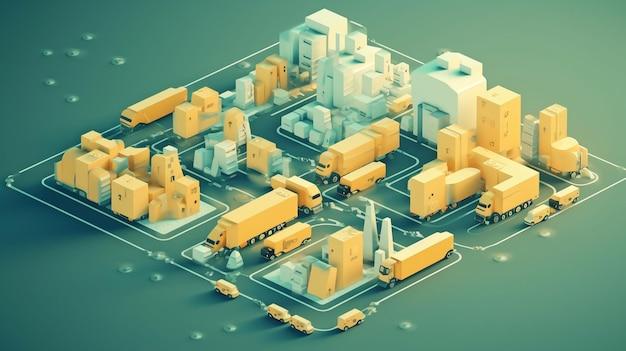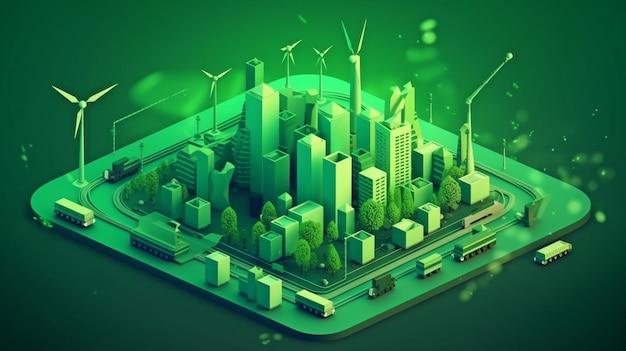As more and more companies focus on sustainability and eco-friendliness, the importance of reverse logistics has increased significantly. But what exactly is reverse logistics, and how does it help in reducing waste and improving supply chain efficiency?
In this comprehensive guide, we will delve deep into the topic of reverse logistics and explore the 5 R’s of supply chain management, which play a crucial role in reducing waste and improving sustainability. From understanding the basics of reverse logistics to exploring practical examples, this guide has got you covered. So, let’s get started!
The Five R’s of Reverse Logistics
Reverse logistics is a crucial aspect of the supply chain that deals with the movement of products from the point of consumption back to the manufacturer. It includes activities such as returning, recycling, refurbishing, repurposing, and reselling goods to minimize waste and maximize value. In this subsection, we will dive deep into the five R’s of reverse logistics and explore how they can benefit your business.
1. Returns
Returns are an inevitable part of any business, and they can be quite costly if not handled properly. By implementing an efficient returns management system, you can streamline the process of receiving, inspecting, and restocking returned products. This will not only reduce your operational costs but also improve customer satisfaction and loyalty.
2. Recycling
Recycling is the process of converting waste materials into new products, and it’s a critical component of sustainability. By recycling materials such as paper, plastic, and metal, you can reduce your environmental impact and conserve natural resources. Moreover, recycling can also help you save money on raw materials and reduce your carbon footprint.
3. Refurbishing
Refurbishing involves repairing or restoring a product to its original condition, thereby extending its useful life. This is particularly useful for products that have minor defects or damages that can be fixed easily. By refurbishing products, you can reduce your costs, increase your profit margins, and provide your customers with high-quality products at a lower price.
4. Repurposing
Repurposing refers to using an item for a different purpose than what it was originally intended for. This can be a great way to add value to products that are no longer in demand or have become obsolete. By repurposing products, you can tap into new markets, generate additional revenue streams, and reduce waste.
5. Reselling
Reselling involves selling returned, refurbished, or repurposed products through various channels such as online marketplaces or retail stores. This can be a lucrative business model as it allows you to sell products at a lower price point while still making a profit. Moreover, reselling can also help you clear out excess inventory, reduce your storage costs, and improve customer satisfaction.
In conclusion, the five R’s of reverse logistics offer a range of benefits for businesses of all sizes and industries. By adopting these practices, you can optimize your supply chain, reduce waste, and maximize value. So, the next time you’re faced with a product that has reached the end of its lifecycle, think about how you can apply the five R’s and turn it into a valuable asset.
Examples of Reverse Logistics in Action
Reverse logistics is an ever-growing industry, and it’s not hard to see why. Companies are starting to realize that they can save a ton of money by reusing or recycling their products. Here are a few examples of companies who are leading the way in reverse logistics:
Apple
Apple is a company that’s been pushing the envelope when it comes to reverse logistics for years. The company has a program in place that allows consumers to send in their used Apple products and get a discount on a new purchase. Apple is then able to take those used products and refurbish them, either selling them as refurbished items or using them as replacement parts in other devices.
Zara
Fashion company Zara has also taken notice of the benefits of reverse logistics. The company has implemented a program where customers can bring in used clothing to be recycled. Zara then takes that clothing and repurposes it, either turning it into new garments or using it as insulation or padding in packaging materials.
Home Depot
Even home improvement retailer, Home Depot, is getting in on the action. The company has a program where customers can bring in used power tools to be recycled. Home Depot will take those tools, refurbish them, and either sell them as refurbished items or use them as replacement parts in other tools.
Walmart
Walmart is another company that has made a commitment to reverse logistics. The company has a program in place where customers can bring in used car seats to be recycled. Walmart will then take those car seats and turn them into new products, like lawn chairs.
These are just a few examples of companies that are doing great things in the world of reverse logistics. By recycling and reusing products, companies can save money and resources while also reducing their environmental impact.
What Are the 5 Rs of Supply Chain Management
If you’re new to the world of supply chain management, then you might be wondering what the heck are the 5 Rs. Well, wonder no more, because we’ve got you covered! The 5 Rs stand for Reduce, Reuse, Recycle, Repair, and Return. And yes, they’re just as important as they sound.
Reduce
The first R, Reduce, is all about minimizing waste in the supply chain. This could include reducing excess packaging or finding ways to use fewer materials during production. Ultimately, the goal is to minimize the environmental impact of shipping and manufacturing.
Reuse
The second R, Reuse, focuses on finding ways to use products and packaging more than once. This could involve using recycled materials or designing products with durability in mind. By reusing products and materials, supply chains can reduce waste and save money.
Recycle
The third R, Recycle, is all about taking the waste that’s generated in the supply chain and turning it into something new. This could include recycling materials like paper or plastic, or even repurposing products that have reached the end of their lifecycle.
Repair
The fourth R, Repair, is all about fixing products that are broken or damaged, rather than just throwing them away. This could involve repairing electronics or refurbishing old products. By repairing products, supply chains can extend their lifespan and reduce waste.
Return
The final R, Return, is focused on managing product returns in a responsible way. This could involve giving customers the option to return products for recycling, or finding ways to repurpose returned products. By managing returns effectively, supply chains can reduce waste and improve customer satisfaction.
And there you have it, the 5 Rs of supply chain management! By following these principles, supply chains can work toward a more sustainable future and minimize their impact on the environment.



